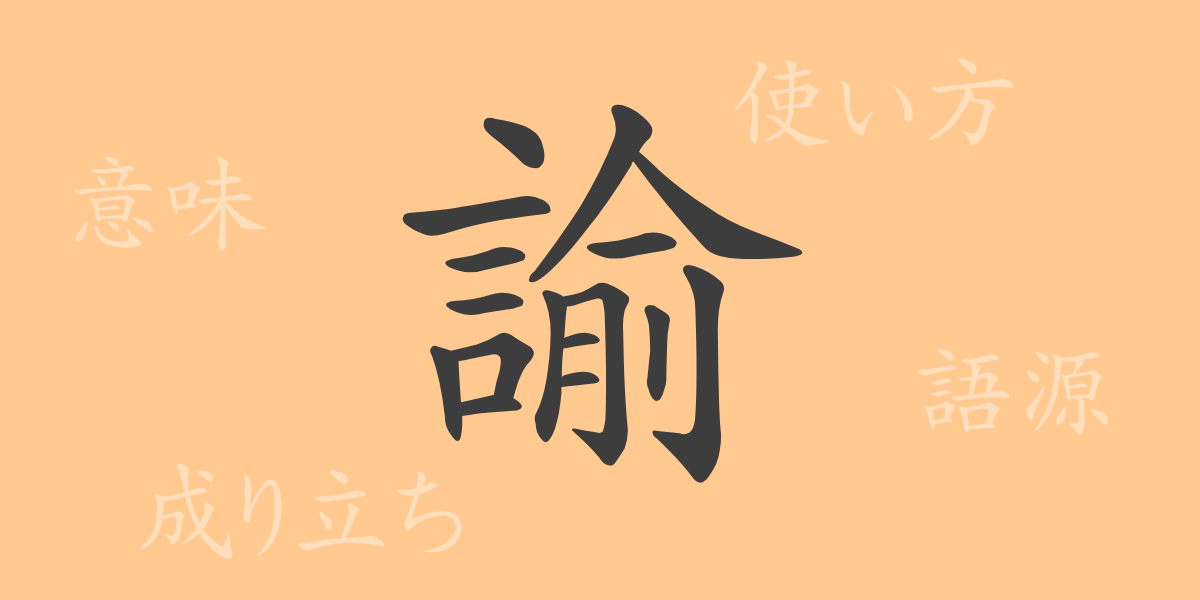The Japanese language has a unique ability to delicately express emotions and philosophy. Among its many characters, the kanji “諭 (ゆ, yu)” carries profound meaning and a didactic resonance. In this article, we will delve into the historical background, meaning, and common idioms and proverbs involving the character “諭 (ゆ, yu),” uncovering its charm.
Origin of 諭 (語源)
The kanji “諭 (ゆ, yu)” has its origins in ancient China. This character embodies the concept of guiding others through words. By tracing its usage in ancient texts, we can observe its historical evolution. The character encapsulates a culture of carefully chosen words and respect for others.
Meaning and Usage of 諭 (ゆ, yu)
The primary meaning of “諭 (ゆ, yu)” is to explain the reasoning of matters to others and convince them. This kanji conveys a nuance of seeking understanding rather than commanding from above. It is frequently used in the fields of education and law, with a wide range of applications.
Reading, Stroke Count, and Radical of 諭 (ゆ, yu)
The kanji “諭 (ゆ, yu)” has distinctive features in its form and sound.
- Reading: In On’yomi (音読み), it is read as “ゆ (yu),” and in Kun’yomi (訓読み), it is read as “さと.す (sato.su).”
- Stroke Count: “諭 (ゆ, yu)” has 16 strokes.
- Radical: The radical of this kanji is 言 (ごんべん, gonben).
Idioms, Expressions, and Proverbs Using 諭 (ゆ, yu) and Their Meanings
Idioms, expressions, and proverbs containing “諭 (ゆ, yu)” play an important role in the Japanese language. For instance, “訓諭 (くんゆ, kunyu)” means to teach and guide, and “優諭 (ゆうゆ, yuuyu)” means to gently admonish. These expressions reflect the thoughtfulness and respect in Japanese communication.
Summary of 諭 (ゆ, yu)
The kanji “諭 (ゆ, yu)” embodies the beautiful concept of guiding and understanding others through words. Its form, meaning, and usage teach us about the richness of the Japanese language and culture. When you encounter this kanji in daily life, take a moment to reflect on the history and culture behind it.

























